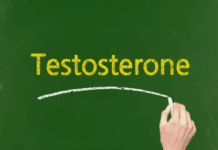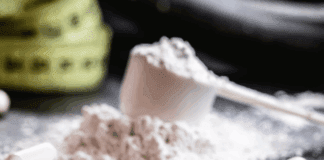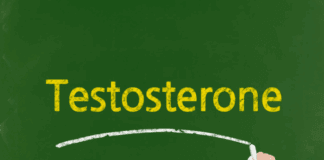Tai Chi
DEFINITION
Tai chi, otherwise known as tai chi chuan or taiji, is a form of mind/body exercise that developed in China about the twelfth century CE. as a so-called soft martial art.
Its name means “supreme ultimate boxing” in Chinese. The word soft means tai chi emphasizes the person’s internal spiritual power rather than sheer external muscular force.
It is occasionally described as a form of moving meditation.
In China, tai chi is thought to benefit a person by unblocking and improving chi (or qi) flow throughout the body. Chi is the Chinese term for “vital energy” or “life force.”
DESCRIPTION
Background
According to legend, tai chi originated with a Taoist monk named Chang (or Zhang) Sanfeng, variously said to have lived in the tenth or the twelfth century.
One day the monk noticed a snake bobbing and weaving to avoid a crane, trying to kill it rather than striking back directly at the bird.
After a few minutes, the crane became frustrated and flew off, leaving the snake in peace.
The monk concluded that the snake’s receptive or “soft” pattern of self-defense was a good illustration of a saying attributed to Lao Tzu, the founder of Taoism:
“The soft and the pliable will defeat the hard and strong.” Chang Sanfeng is credited with developing the 13 basic postures found in all modern forms of tai chi.
Until the early nineteenth century, tai chi developed within China as a combination of martial art, meditation training, and physical workout to maintain overall good health.
It was incorporated into the practice of traditional Chinese medicine, an inclusive system that teaches the importance of regular exercise and a proper diet, the use of herbal remedies, acupuncture, and a type of deep tissue massage known as tui na.
In the 1820s, five major schools of tai chi developed in China, known by the names of their founding families as Yang, Wu, Sun, Chen, and Wu/Hao.
Tai chi was first popularized as a form of physical exercise for health maintenance (rather than a martial art) in China in the early twentieth century.
It did not become widely popular in the West, however, until the 1970s.
During that period, some Chinese masters came to the United States, while practitioners of alternative medicine began to recommend tai chi (along with yoga) as a form of low-impact exercise that reduces emotional stress and clears the mind, and maintaining good posture and flexibility of joints and muscles.
Since Western researchers have studied 1990 tai chi as a form of exercise particularly well-suited to seniors, they can be practiced by people who are overweight or have other health limitations. It also has a low risk of injury to muscles and joints.
Basic tai chi practice
There are two basic forms of tai chi widely taught in the United States, a solo form for overall fitness, balance, and flexibility; and the “pushing hands” form, which requires a partner. Both forms can be practiced by seniors following appropriate instruction.
The solo form most commonly taught in the United States was developed by a Cheng Man-Ching teacher in the 1940s and is variously known as the Yang Short Form or the Cheng Man-Ching Tai Chi Form.
It consists of 37 basic postures that flow into one another in graceful, continuous movements.
The person performing tai chi practices deep breathing (from the abdomen) and meditating while moving through the series of postures.
The postures themselves are performed while keeping the spine straight but do not require extreme positions or stretching beyond the body’s natural range of motion.
To encourage participants to hold the body upright, some teachers of solo tai chi instruct students to think of a string stretching from the top of their head into the sky and let their weight sink down to the soles of the feet.
The Yang Short Form was developed for overall health and fitness rather than martial arts skills.
It takes approx 7 minutes to complete when performed for health benefits but can be performed more slowly (taking about 10 to 12 minutes) for purposes of meditation and release of emotional stress.
The various movements have interesting names, including Undifferentiated Unity (the introductory posture), Single Whip; White Crane Cools Wings, Play Guitar, Embrace Tiger,
Diagonal Flying, Wave Hands Like Clouds, Golden Rooster Stands on One Leg (teaches balance), Fair Lady Weaves the Shuttle, Grasping the Sparrow’s Tail, and Step Up to the Seven Stars.
Most practitioners complete the short form twice a day, usually once in the morning and the evening.
“Pushing hands” tai chi requires faster movement and is closer to the practice of tai chi as a martial art.
The main purpose of the exercise is to improve one’s own coordination and balance while pushing the partner off balance.
The two partners face each other at arm’s distance and place a hand on the other’s elbow at chest height.
The participants move their arms, legs, and hands in a circular pattern while maintaining contact with each other; they cannot use brute force to unbalance each other.
Pushing hands requires a basic understanding of and experience in practicing solo tai chi.
It allows people to test and improve their relaxation, flexibility, timing, and balance and provides a form of low-key competition without risking serious injury.
Tai chi does not require expensive equipment or a uniform. Participants wear loose-fitting unisex-style clothing and soft-soled shoes.
A cotton T-shirt loose enough to permit free movement of the arms and wide-legged pants with either an elastic waist or drawstring waist are fine.
DEMOGRAPHICS
Some sources claim that tai chi is the most widely practiced form of physical exercise in the world.
It is common in China and other countries with large Chinese populations to see people of all ages and both sexes performing tai chi exercises for health outdoors (usually in the morning), in public squares or parks, or in other convenient open spaces.
Tai chi is practiced as a competitive sport in China and martial art and a general fitness exercise; in tournament competitions, the athlete completes a standardized set of movements known simply as the Competition Form within a time limit of 6 minutes.
In the United States through the 1990s and into the next decade, particularly as the baby-boom generation approached retirement age, there was a sharp increase in interest in tai chi as a form of exercise with many benefits to seniors.
According to one U.S. sports participation study published in 2007, tai chi is one of the fastest-growing fitness activities in the United States.
Many senior centers, as well as hospitals, wellness clinics, and general community centers, offer classes in tai chi.
Those who cannot find or get to a class in their area can learn tai chi from instructional books or videos intended for seniors.
However, a major advantage of having an instructor is that participants can receive feedback as to whether they are performing the movements safely and correctly.
PURPOSE
Although Westerners generally think of tai chi in terms of its benefits to physical health (particularly flexibility, good posture, better sleep,
and better coordination) and emotional stress reduction, the Chinese regard it as part of an overall medical system intended to preserve the body’s chi and extend the life span.
Although some Westerners do value the meditative dimension of tai chi and maintain that it helps in focusing the mind as well as keeping the body fit and flexible, relatively few follow the dietary rules and herbal medications of traditional Chinese medicine.
CHALLENGES
There are relatively few physical challenges involved in tai chi since the postures are well within the body’s normal range of motion and feel comfortable and natural to most people.
Some seniors who are seriously overweight or have weak ankles may find a few of the poses intended to teach balance a bit difficult, but these can be omitted or modified if necessary.
A competent teacher of tai chi can modify the Yang Short Form to accommodate almost any physical limitation that individuals may have.
RISKS
As with any physical exercise program, seniors thinking about tai chi as a fitness regimen should talk with their head care physician before taking a class—mainly if they have not been physically active for some time.
The most common risk is falling; therefore, seniors with osteoporosis or arthritis should be particularly careful to seek a physician’s advice.
Many tai chi instructors also advise participants not to practice tai chi if they are extremely tired or sleepy; are being treated for an active infection, or have just eaten a large meal.
RESULTS
Studies of tai chi in various Western countries have claimed that it benefits seniors with various health problems.
“A large body of carefully conducted study is creating an imperative case for tai chi as an adjunct to usual medical treatment for the prevention and rehabilitation of many conditions commonly associated with age,” claims Peter M. Wayne,
associate professor of medicine at Harvard Medical School and also director of the Tai Chi and Mind and Body Research Program at Harvard Medical School’s Osher Research Center.
- A study published in Hong Kong in early 2008 maintained that tai chi is beneficial to seniors with osteoporosis in that it retards further bone loss and improves muscular coordination.
- Tai chi was studied at a Miami hospital for potential benefits to seniors suffering from frailty syndrome, a condition marked by weight loss, muscular weakness, tiring quickly, and difficulty in walking.
- Studies carried out in Germany, the United Kingdom, and Australia evaluated the efficacy of tai chi in improving balance and lowering the risk of falls in older adults. Although tai chi appears to confer short-term benefits in these areas, the studies disagreed about long-term improvement in seniors’ health.
- Research done at the University of Pittsburgh reported that tai chi and yoga are both effective in reducing chronic low back and joint pain in seniors.
- A pilot program at a research institute in Oregon found that tai chi is effective in maintaining physical functioning in seniors with Parkinson’s disease and that it is a safe and appropriate form of exercise for some Parkinson’s disease patients.
- A study in Australia comparing tai chi to hydrotherapy for treatment of hip and knee osteoarthritis reported that tai chi is only slightly less effective than hydrotherapy in improving the range of motion in the affected joints. The study also found that the improvements in joint mobility were sustained for six months.
- Research conducted at the University of Wisconsin showed that tai chi was helpful in improving seniors’ psychological well-being and in enhancing sleep for those with sleep disturbances.
A remarkable quantity of research has been performed on tai chi in Western institutions since the 1980s.
Several of those studies have focused on the elderly. A 2012 study funded by the National Institutes of Health (NIH) discovered that tai chi improved balance and stance for people with mild to moderate Parkinson’s disease, even more so than resistance training or stretching.
A 2011 research funded by the National Center for Complementary and Integrative Health (NCCIH) found that tai chi may improve overall well-being in people with chronic heart failure.
A 2007 NCCIH-funded study suggested that tai chi boosts immunity in patients suffering from shingles.
Tai chi has also been studied for its benefits for patients with fibromyalgia, breast cancer, HIV infection, and a variety of other conditions, including cardiovascular disease, hypertension, and osteoarthritis.
Resources
Kuo-Deemer, Mimi. Qigong and the Tai Chi Axis: Nourishing Practices for Body, Mind, and Spirit. United Kingdom: Ixia Press, 2019.
Micozzi, Marc S. Fundamentals of Complementary, Alternative, and Integrative Medicine, 6th ed. St. Louis, MO: Elsevier, 2019.
Omnigraphics. Complementary and Alternative Medicine Sourcebook, 5th ed. Detroit, MI: Omnigraphics, 2015.
Pizzorno, Joseph E., Michael T. Murray, and Herb Joiner-Bey. The Clinician’s Handbook of Natural Medicine, 3rd ed. St. Louis, MO: Elsevier, 2016.
Huang, Zhi-Guan, et al. “Systematic Review and Meta-Analysis: Tai Chi for Preventing Falls in Older Adults.” BMJ Open 7 (2017): e013661.
Kong, Ling Jun, et al. “Tai Chi for Chronic Pain Conditions: A Systematic Review and Meta-Analysis of Randomized Controlled Trials.” Scientific Reports 6, no. 25325 (2016).
Lin, Yin-Chou, et al. “Simplified Tai Chi 6-Form Apparatus for Balance in Elderly People with Alzheimer’s Disease.” Journal of Medical and Biological Engineering 39 (2019): 682–92.
Sungkarat, Somporn, et al. “Effects of Tai Chi on Cognition and Fall Risk in Older Adults with Mild Cognitive Impairment: A Randomized Controlled Trial.” Journal of the American Geriatrics Society 65, no. 4 (2017): 721–27.
Zhong, Dongling, et al. “Tai Chi for Improving Balance and Reducing Falls: A Protocol of Systematic Review and Meta-Analysis.” Medicine 98, no. 17 (2019): e15225.
“Tai Chi: A Gental Way to Fight Stress.” Mayo Clinic. https://www.mayoclinic.org/healthy-lifestyle/stress-management/in-depth/tai–chi/art-20045184 (accessed June 18, 2020).
“Tai Chi and Qi Gong: In-Depth.” National Center for Complementary and Integrative Health (NCCIH), National Institutes of Health (NIH). https://www.nccih.nih.gov/health/tai–chi-and-qi-gong-in-depth (accessed June 18, 2020).
“The Health Benefits of Tai Chi.” Harvard Health Publishing, Harvard Medical School. https://www.health.harvard.edu/staying-healthy/the-health-benefits-of-tai–chi (accessed June 18, 2020).
Fung Loy Kok Institute of Taoism, 134 D’Arcy St., Toronto, Ontario, Canada M5T 1K3, (416) 656-2110, Fax: (416) 654-3937, fungloykok@taoist.org, http://www.taoist.org.
National Center for Complementary and Integrative Health (NCCIH), 9000 Rockville Pike, Bethesda, MD 20892, (301) 519-3153, (888) 644-6226, Fax: (866) 464-3616, info@nccih.nih.gov, http://nccih.nih.gov .
Patience T’aiChi Association, 845 65th St., 2nd Fl., Brooklyn, NY 11235, (718) 332-3477, staff@patiencetaichi.com, http://www.patiencetaichi.com.
T’aiChi Foundation, PO Box 575, Midtown Station, New York, NY 10018, (212) 645-7010, http://www.taichifoundation.org .









